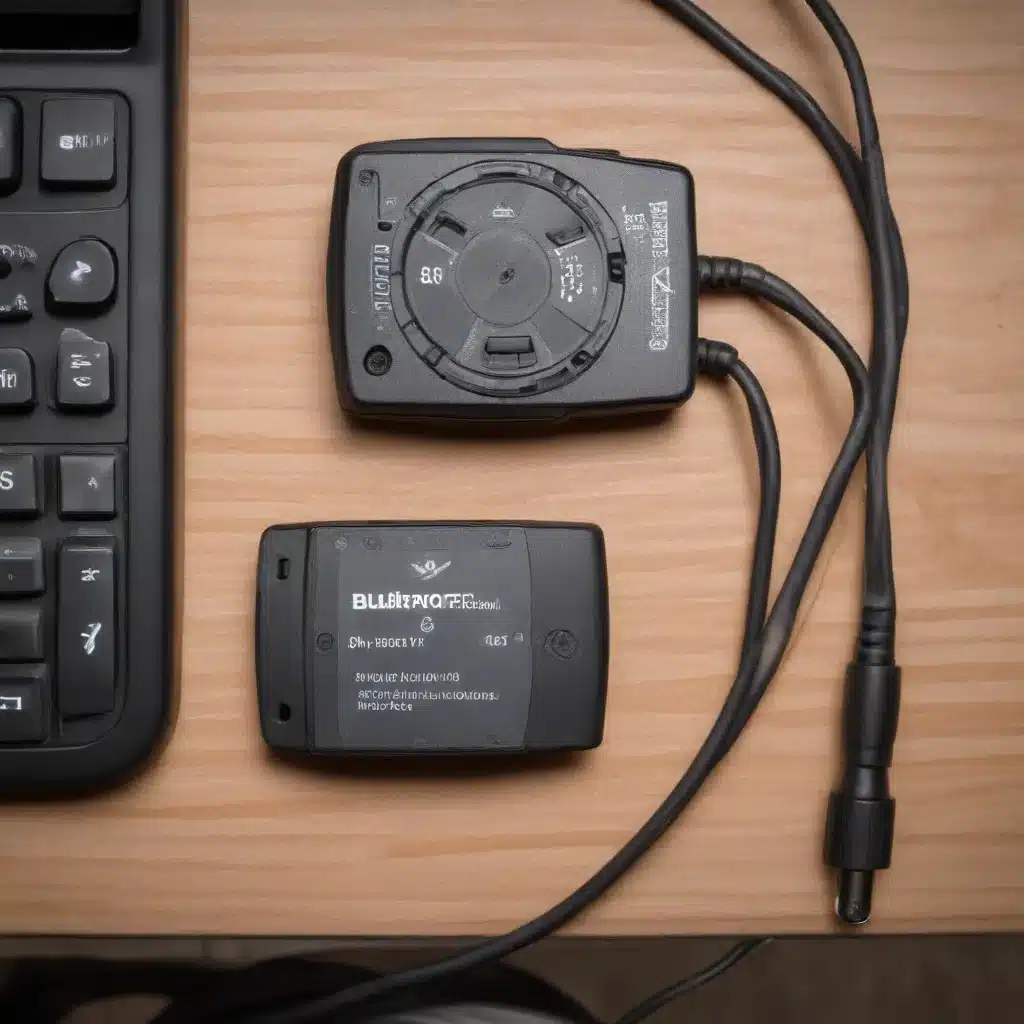
Understanding the Bluetooth Adapter
In today’s technology-driven world, we rely heavily on wireless connectivity to seamlessly integrate our devices and enhance productivity. One crucial component that enables this wireless communication is the Bluetooth adapter. Whether you’re connecting a mouse, keyboard, headphones, or any other Bluetooth-enabled peripheral, a reliable adapter is essential for maintaining a stable and responsive connection.
Unfortunately, Bluetooth adapters can sometimes encounter issues, whether due to hardware failure, software incompatibility, or other factors. When faced with the need to replace your Bluetooth adapter, it’s important to approach the process with a methodical and informed approach to ensure a smooth transition and continued wireless functionality.
Assessing Your Bluetooth Adapter Needs
Before diving into the installation process, it’s important to understand the specific requirements of your setup. Consider the following factors:
-
Device Compatibility: Ensure that the new Bluetooth adapter you plan to purchase is compatible with your computer or device. Check the manufacturer’s specifications and verify that the adapter supports the necessary Bluetooth version and features.
-
Connectivity Requirements: Determine the number and type of Bluetooth devices you need to connect. Some adapters offer multi-device support, while others may be limited to a single connection. Assess your needs to select the appropriate adapter.
-
Wireless Range: If you frequently use your Bluetooth devices in different locations or across larger spaces, consider an adapter with an extended wireless range to ensure reliable connectivity.
-
Ease of Use: Look for an adapter that offers a simple and intuitive setup process, as this can save you time and frustration during the installation.
By carefully considering these factors, you can make an informed decision and select the Bluetooth adapter that best fits your needs.
Preparing for the Bluetooth Adapter Installation
Before you begin the installation process, it’s important to ensure that your computer or device is ready to accommodate the new Bluetooth adapter. Follow these steps to prepare:
-
Backup Important Data: As a precautionary measure, it’s always wise to back up any crucial data on your device before making any hardware changes. This will help safeguard your information in the event of unexpected issues during the installation.
-
Gather Necessary Tools: Depending on the type of Bluetooth adapter you’re installing, you may need a screwdriver or other basic tools. Ensure that you have the required items ready to hand before starting the process.
-
Review Device Specifications: Consult your device’s user manual or manufacturer’s website to understand the specific requirements and installation instructions for your Bluetooth adapter. This information will guide you through the process and help you avoid any potential pitfalls.
-
Disconnect Existing Bluetooth Devices: If you’re replacing an existing Bluetooth adapter, be sure to disconnect any connected devices before proceeding. This will help prevent any conflicts or interference during the installation.
-
Disable Existing Bluetooth Drivers: In some cases, you may need to uninstall or disable the current Bluetooth drivers on your device to ensure a successful installation of the new adapter. Follow the instructions provided by the manufacturer or consult online resources for specific guidance.
With these preparatory steps complete, you’re now ready to begin the installation process for your new Bluetooth adapter.
Installing the Replacement Bluetooth Adapter
The installation process for a replacement Bluetooth adapter can vary depending on the specific device and adapter model, but the general steps are as follows:
-
Physically Install the Adapter: If your Bluetooth adapter is a USB dongle, simply insert it into an available USB port on your computer or device. For internal adapters, you may need to open your device’s housing and secure the adapter according to the manufacturer’s instructions.
-
Install Necessary Drivers: Many Bluetooth adapters require the installation of specific drivers to function properly. Follow the instructions provided with your adapter, which may involve downloading and running an installation program or manually installing the drivers through your device’s settings.
-
Configure Bluetooth Connectivity: Once the adapter is physically installed and the drivers are set up, you’ll need to configure your Bluetooth connectivity. This may involve pairing your Bluetooth devices, managing connection settings, and customizing preferences.
-
Test and Troubleshoot Connectivity: After the installation is complete, test the functionality of your Bluetooth adapter by connecting various devices. If you encounter any issues, refer to the manufacturer’s troubleshooting guides or consult online resources for additional support.
It’s important to note that the specific steps for installing a replacement Bluetooth adapter may vary depending on your operating system, device type, and the adapter itself. However, by following the general guidelines outlined here and the instructions provided by the adapter manufacturer, you can navigate the installation process with confidence.
Maintaining and Optimizing Bluetooth Connectivity
To ensure the long-term reliability and performance of your Bluetooth adapter, it’s essential to maintain and optimize your setup. Here are some tips to consider:
-
Keep Drivers Up-to-Date: Regularly check for and install any available driver updates for your Bluetooth adapter. These updates can address bug fixes, improve compatibility, and enhance overall performance.
-
Optimize Bluetooth Settings: Explore the Bluetooth settings on your device and customize them to suit your needs. This may include adjusting the wireless range, changing the Bluetooth device names, or enabling power-saving modes.
-
Manage Bluetooth Devices: Regularly review the list of connected Bluetooth devices and remove any devices you no longer use. This can help prevent potential conflicts and maintain a streamlined Bluetooth ecosystem.
-
Monitor Bluetooth Performance: Pay attention to any changes in your Bluetooth connectivity, such as dropped connections, reduced range, or decreased responsiveness. If you notice any issues, troubleshoot the problem or consider replacing the adapter if necessary.
By following these maintenance and optimization strategies, you can ensure that your replacement Bluetooth adapter continues to provide reliable and efficient wireless connectivity for your devices.
Remember, if you encounter any persistent issues or require additional guidance, the IT Fix blog is here to provide expert insights and practical solutions to help you overcome your technology challenges.












